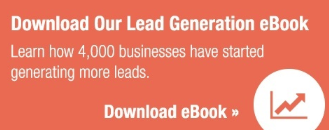![]() What's the secret to successful landing page optimization? Test, test, and test some more.
What's the secret to successful landing page optimization? Test, test, and test some more.
By A/B testing elements of your page and the page as a whole, you can create a more conversion-friendly end product. More often than not, this process can be accomplished easily within an inbound marketing platform like HubSpot. However, you can also test your landing pages manually by viewing web or eBlast analytics. Here's how to do it.
First off, create your landing page. Make sure the page explicitly states what is being offered, the benefit of the offer, an element of urgency, and clear instructions that illustrate how the visitor can get the offer. (Click here for more tips on how to create an effective landing page.) For our purposes let's call this landing page "Six Ways Solar Saves You Money." This is the original — or "control" — page.
Now you're going to create a variation of that landing page. We'll call it "Six Ways Solar Saves You Money (Variation.)" You can tweak the variation by, for example, changing the medium. The original landing page's offer may have been a white paper; the variation can be a brief video.
Also tweak the presentation of the copy — bullet points vs. a brief paragraph. Swap in a different image, include an additional form field or two, and so on.
And remember: don't just create variations around design- or content-related elements of your pages. Landing page optimization requires marketing departments to test across different target audiences, day of the week, and hour of the day. That said, make sure you roll out the pages on a consistent basis. For example, split your audience list and test the original and variation page simultaneously. If you were to space the testing out over, say, a week or two, it would contaminate your results.
Publish the variation and test the A/B results across metrics like views, submissions, submission rate, new contacts, and new contact rate. Trends and patterns will emerge. But your work isn't done. Further analysis is needed to determine why one version outperformed the other. Perhaps it was a different image or variation of your copy. The best way to do this is to simply test one variable at a time: keep the original and variation pages exactly the same except for that one slight difference.
And while it's certainly important to A/B test at the element level, also test as the "macro-level." That is, create two entirely different-looking landing pages — different headlines, images, copy, etc. If you see a drastic difference in conversions, you can use the success version as a high-level model moving forward. What do you think? What are the key ingredients to landing page optimization? What elements did we neglect to mention? Does your team track effectiveness manually or within an inbound marketing platform?





